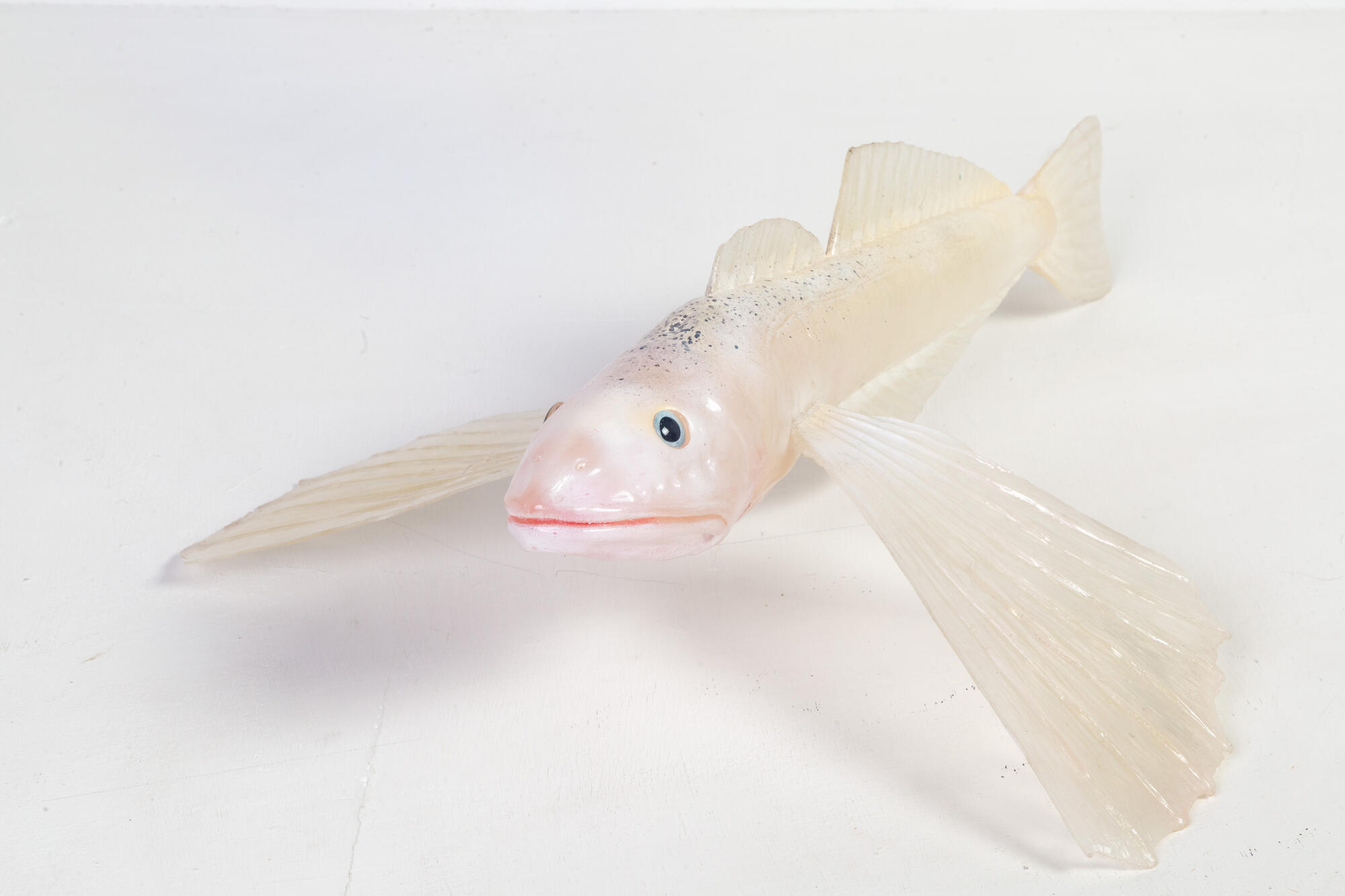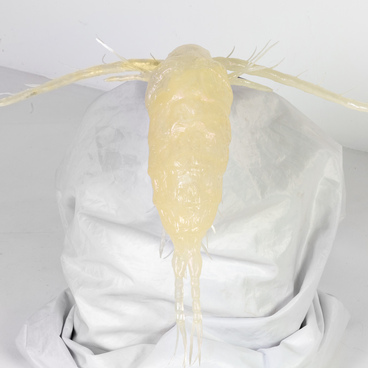Golomyanka is a small Baikal fish. It belongs to endemic species that live only in this area and nowhere else in the world. There are two kinds of golomyankas, namely: Baikal oilfish and little Baikal oilfish. Both were formed in the Baikal waters about 2 million years ago, but they have some significant differences. For example, an adult little Baikal oilfish remains transparent all its life. The spine and blood vessels are visible through its skin. Baikal oilfish becomes whitish and loses its transparency.
The name of the fish came from the depths of time. In the 16th century, the word ‘golomya’ meant a place on the river or lake remote from the coast. ‘Golomen’ came from this word. It meant ‘bottomless place’. The golomyanka lives exactly in such places. The Dahl Dictionary reads: ‘the golomyanka is a Baikal fish that can always be found in golomen, i.e. a great depth.’ It is noteworthy that this fish has no scales and is one-third fat. This compensates for its lack of a swim bladder. Both large and small species are most often found at a depth of from 250 to 500 meters, but they also live deeper, e.g. up to 1.5 kilometers. Large pectoral fins also help it move between the surface and the bottom of the lake.
The golomyanka feeds on planktonic crustaceans, such as the cyclops and epischura. It catches food by opening its mouth and often biting its prey. Large specimens often engage in cannibalism. The golomyanka goes for food to the surface at night, and during the day it hides from predators like omul or seal closer to the bottom. If this fish is washed ashore after a storm, it becomes prey for local birds.
Baikal golomyanka is viviparous. It does not spawn, shed the eggs, or migrate, which is unique in cold waters. Before parturition, it rises closer to the surface where plankton live to provide food for the offspring. The Baikal oilfish breeds offspring in late summer when the water is as warm as possible, and until mid-autumn. Little Baikal oilfish prefers spring. During parturition, the Baikal oilfish has up to 2,500 larvae, while the little Baikal oilfish has about 1,500 larvae.
Golomyankas are the most numerous fish in Lake Baikal. Their total weight is about 150 thousand tons, which is 67% of the biomass of all fish. The annual growth of the golomyanka is about 150 thousand tons, that is, during the year it completely renews its entire population.
The name of the fish came from the depths of time. In the 16th century, the word ‘golomya’ meant a place on the river or lake remote from the coast. ‘Golomen’ came from this word. It meant ‘bottomless place’. The golomyanka lives exactly in such places. The Dahl Dictionary reads: ‘the golomyanka is a Baikal fish that can always be found in golomen, i.e. a great depth.’ It is noteworthy that this fish has no scales and is one-third fat. This compensates for its lack of a swim bladder. Both large and small species are most often found at a depth of from 250 to 500 meters, but they also live deeper, e.g. up to 1.5 kilometers. Large pectoral fins also help it move between the surface and the bottom of the lake.
The golomyanka feeds on planktonic crustaceans, such as the cyclops and epischura. It catches food by opening its mouth and often biting its prey. Large specimens often engage in cannibalism. The golomyanka goes for food to the surface at night, and during the day it hides from predators like omul or seal closer to the bottom. If this fish is washed ashore after a storm, it becomes prey for local birds.
Baikal golomyanka is viviparous. It does not spawn, shed the eggs, or migrate, which is unique in cold waters. Before parturition, it rises closer to the surface where plankton live to provide food for the offspring. The Baikal oilfish breeds offspring in late summer when the water is as warm as possible, and until mid-autumn. Little Baikal oilfish prefers spring. During parturition, the Baikal oilfish has up to 2,500 larvae, while the little Baikal oilfish has about 1,500 larvae.
Golomyankas are the most numerous fish in Lake Baikal. Their total weight is about 150 thousand tons, which is 67% of the biomass of all fish. The annual growth of the golomyanka is about 150 thousand tons, that is, during the year it completely renews its entire population.



